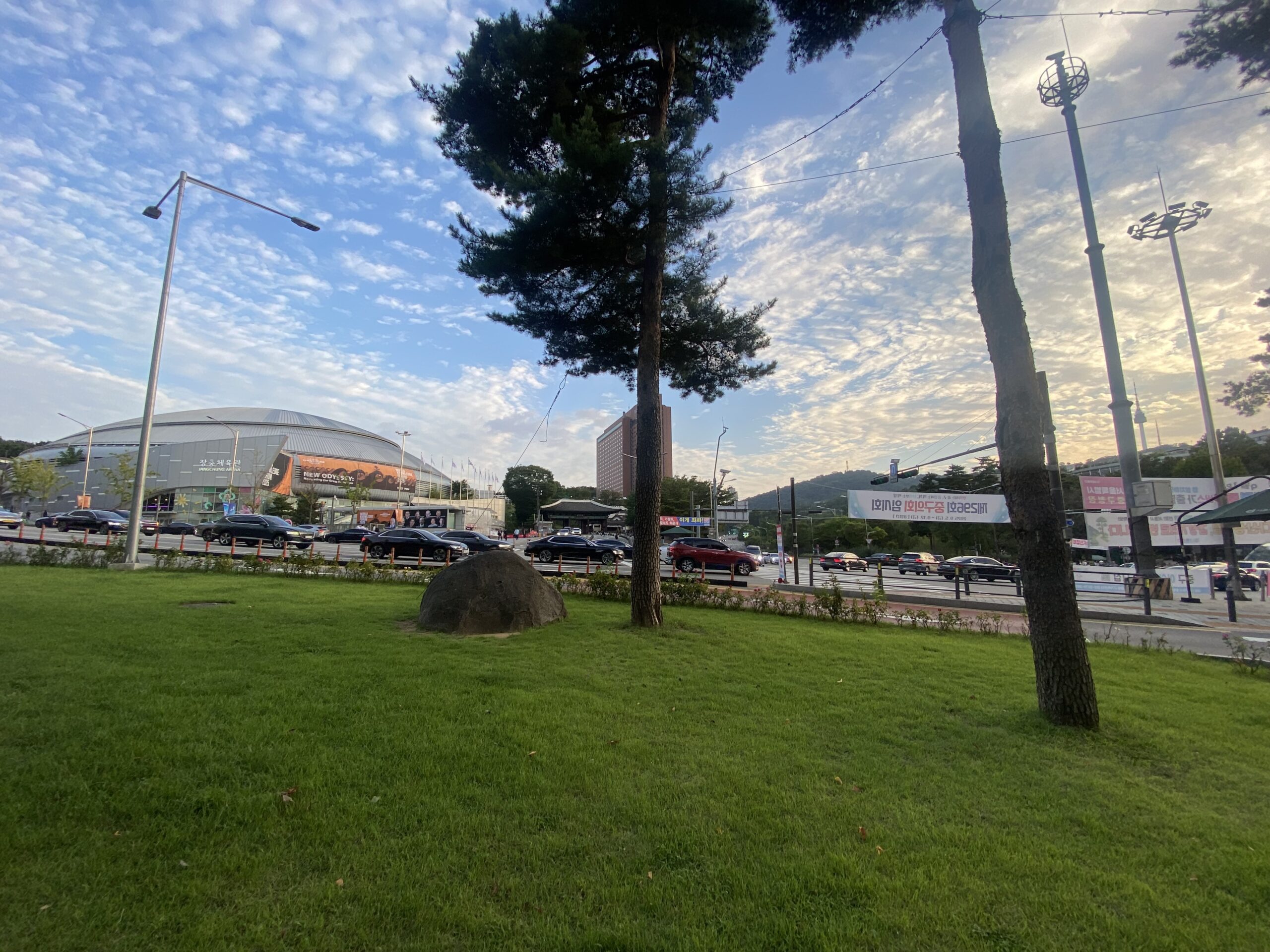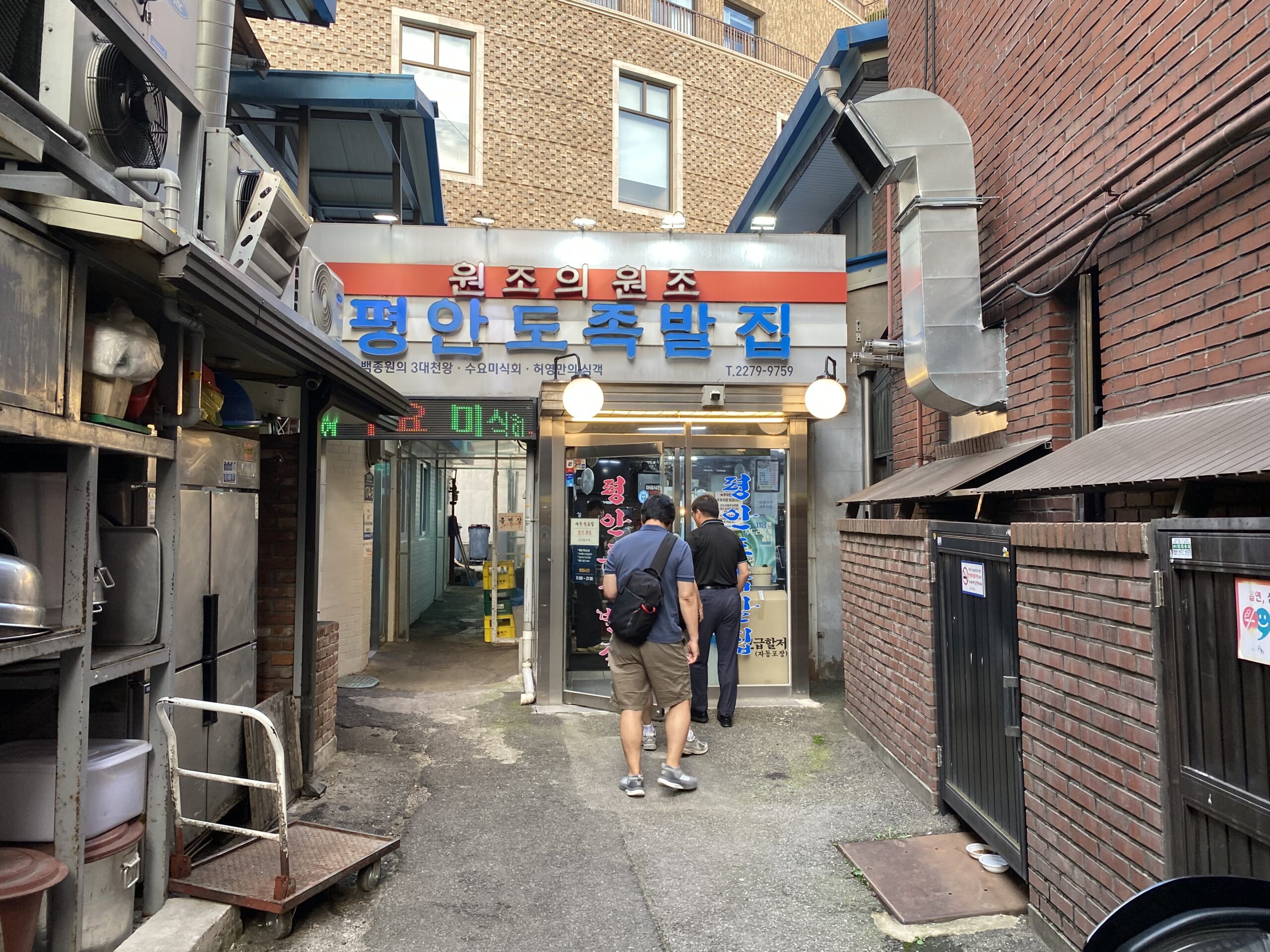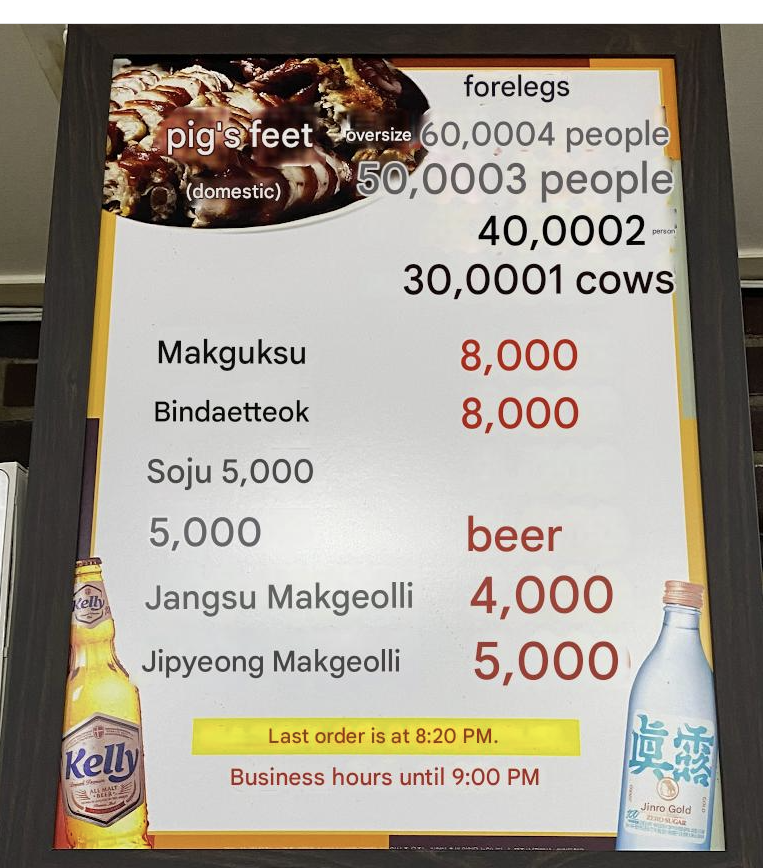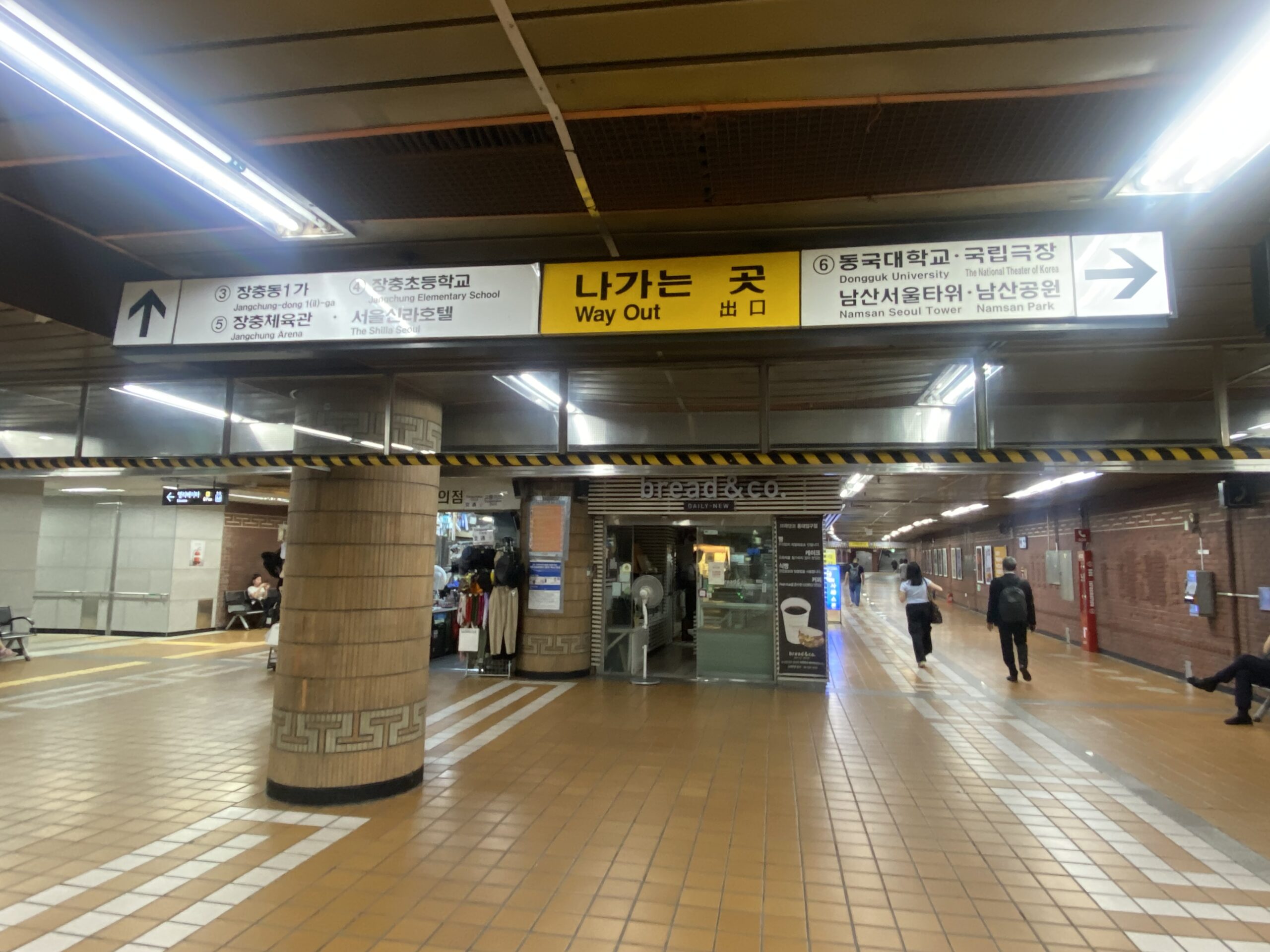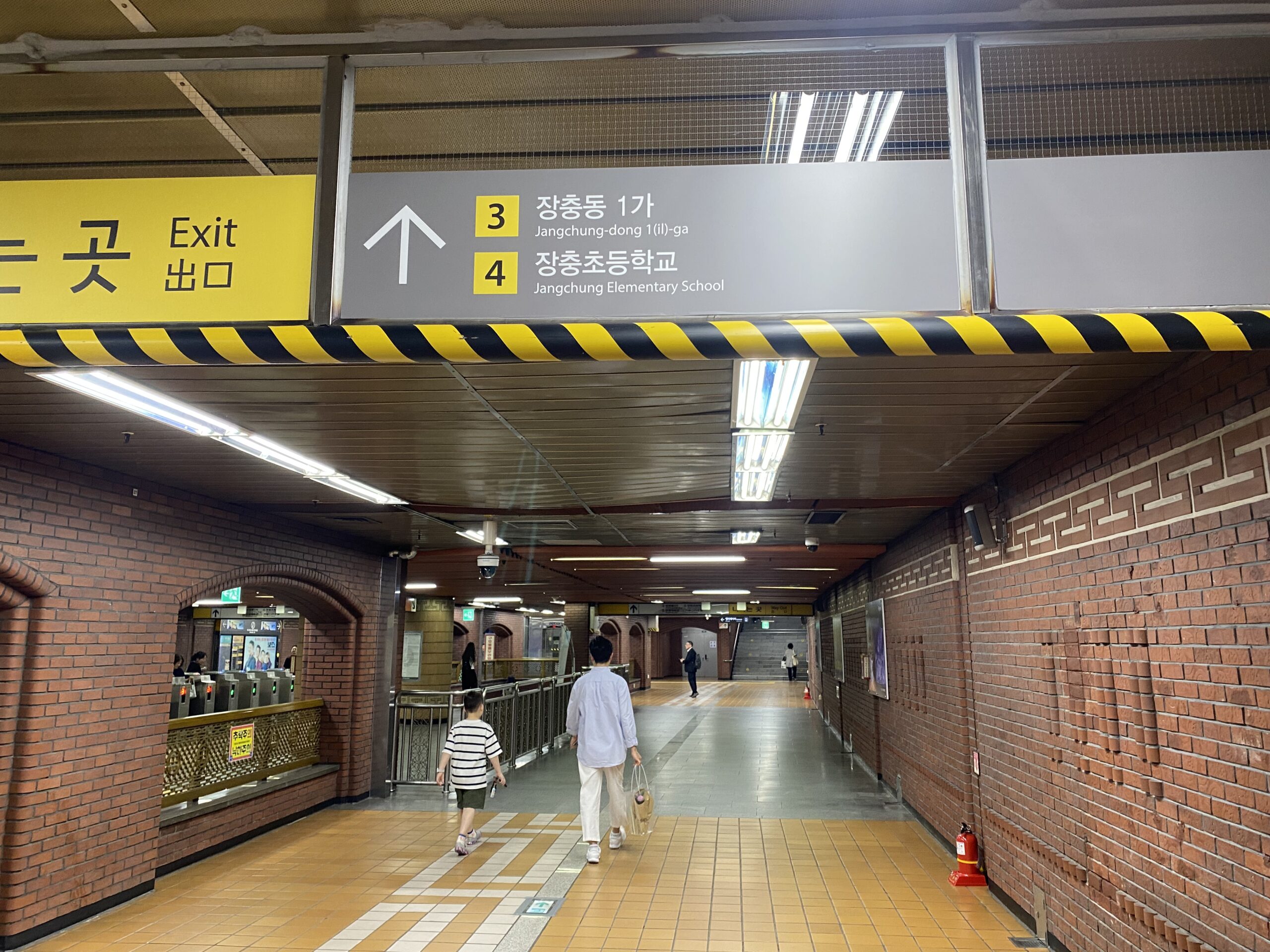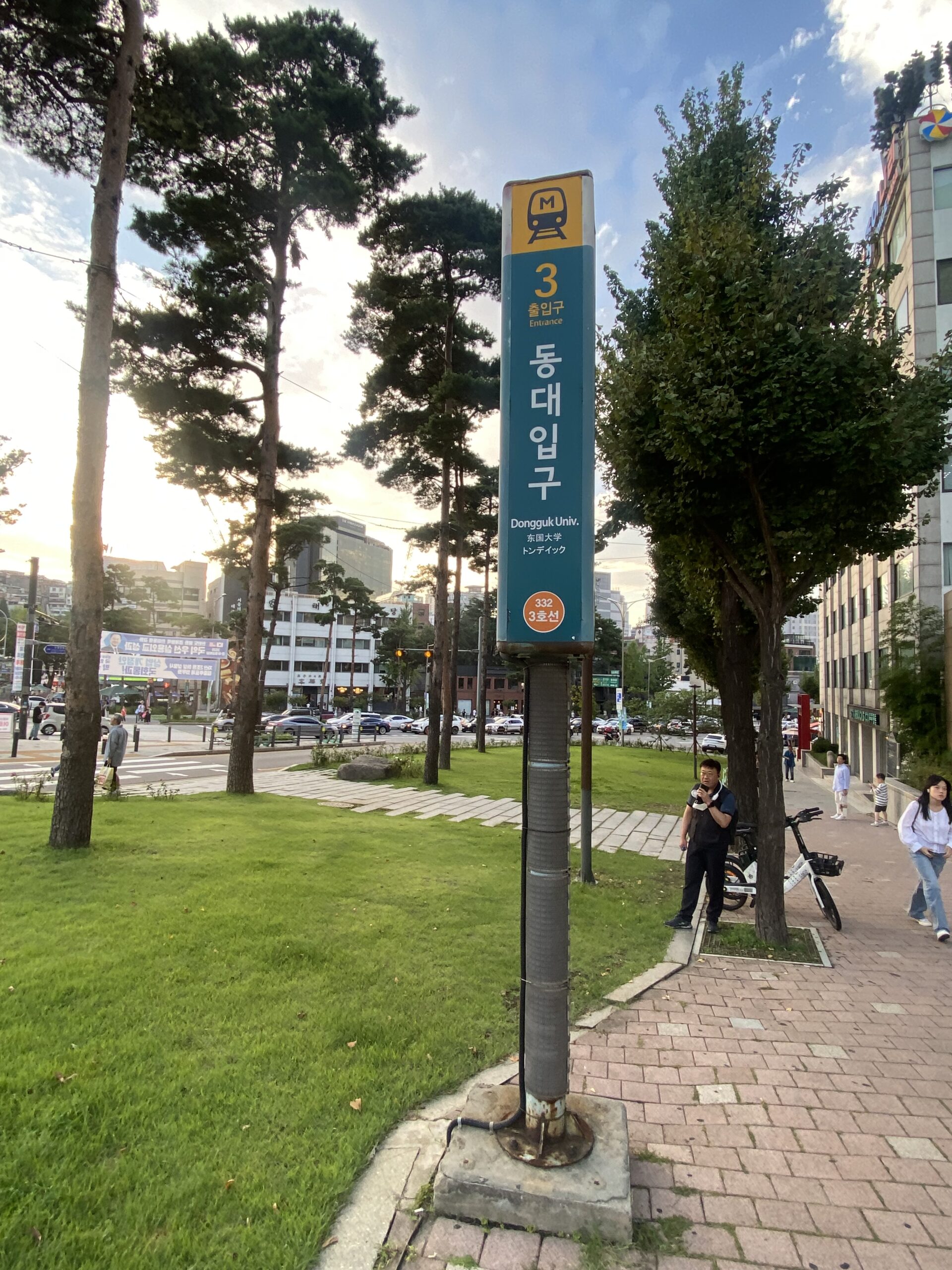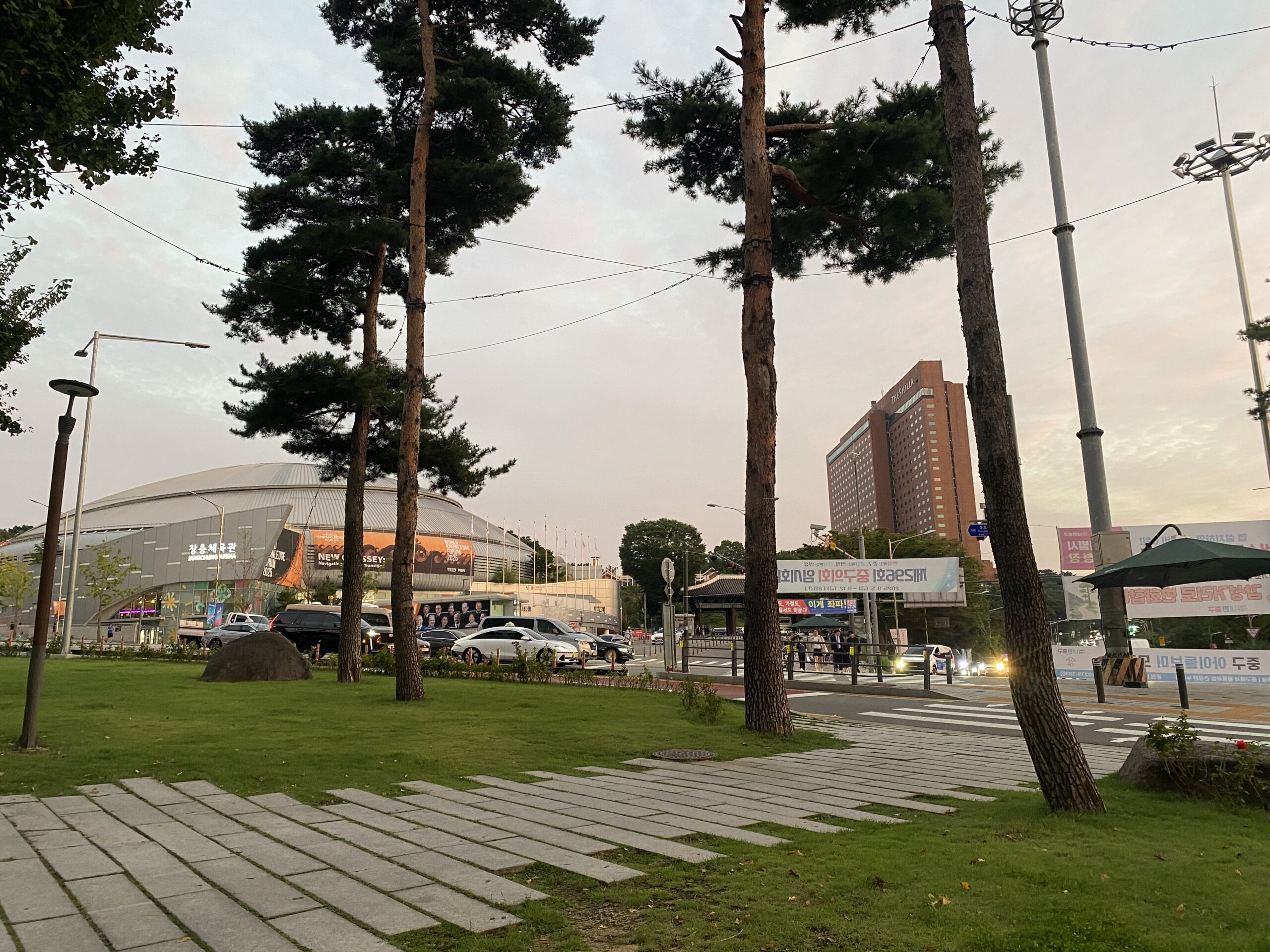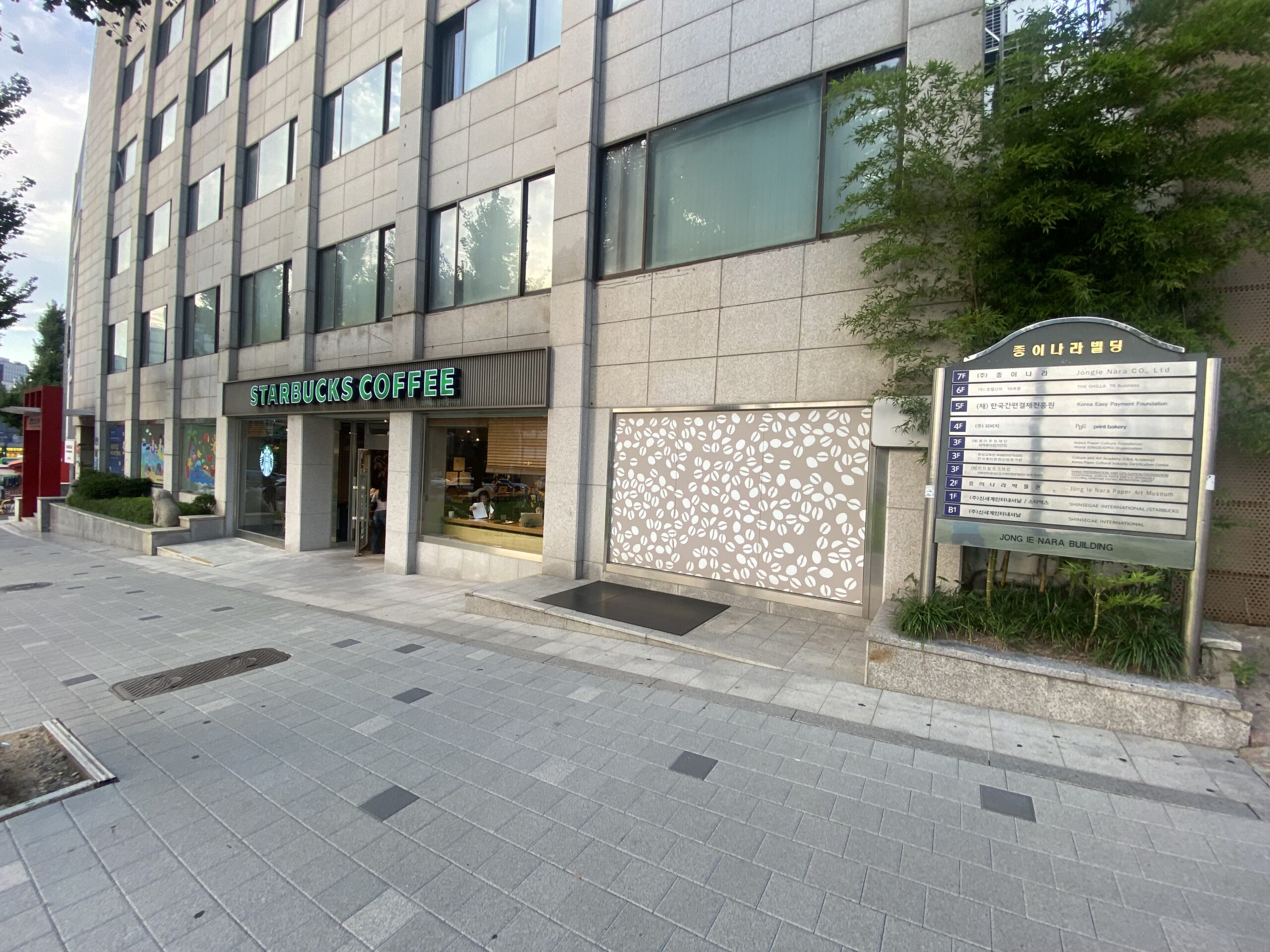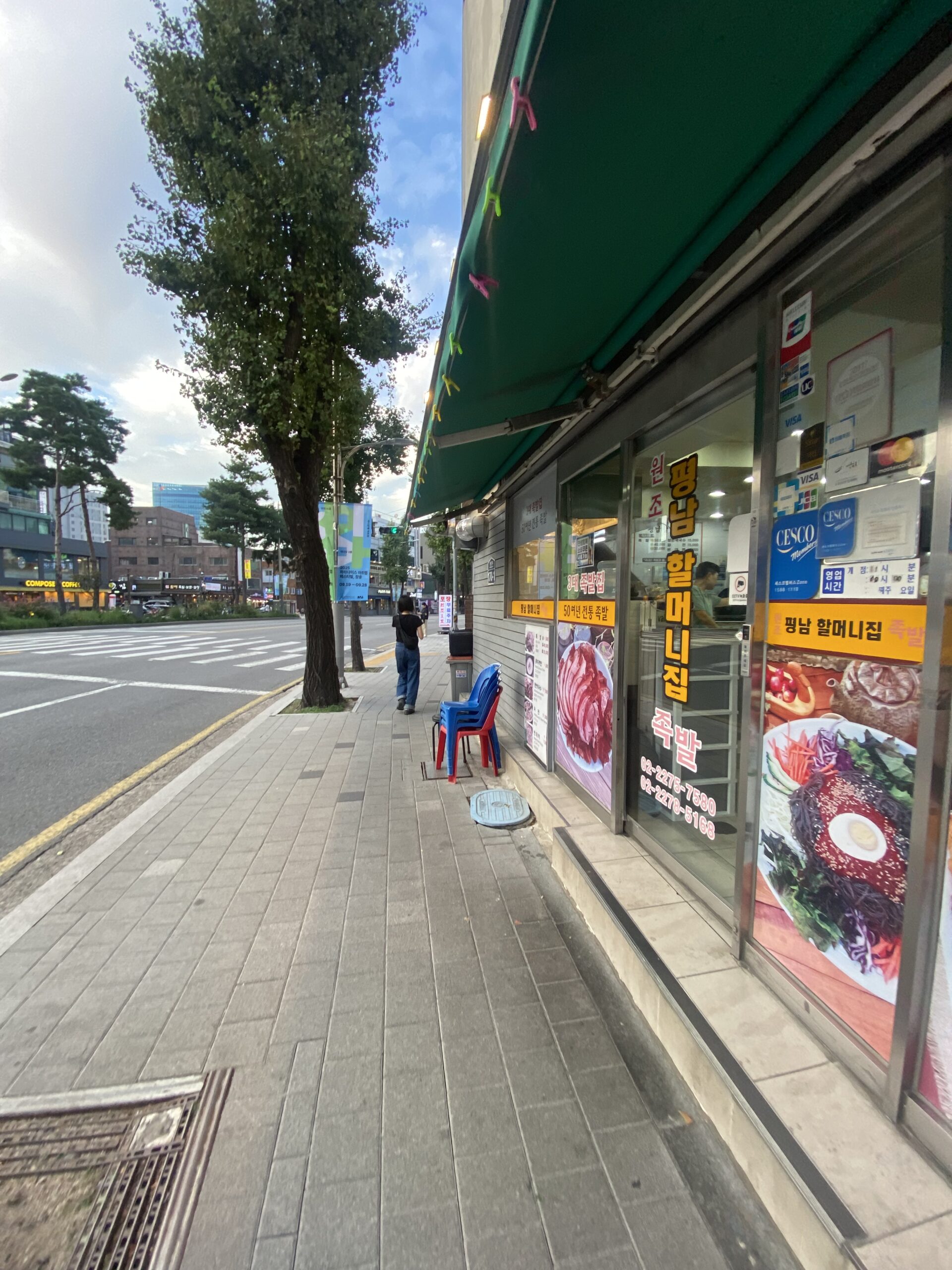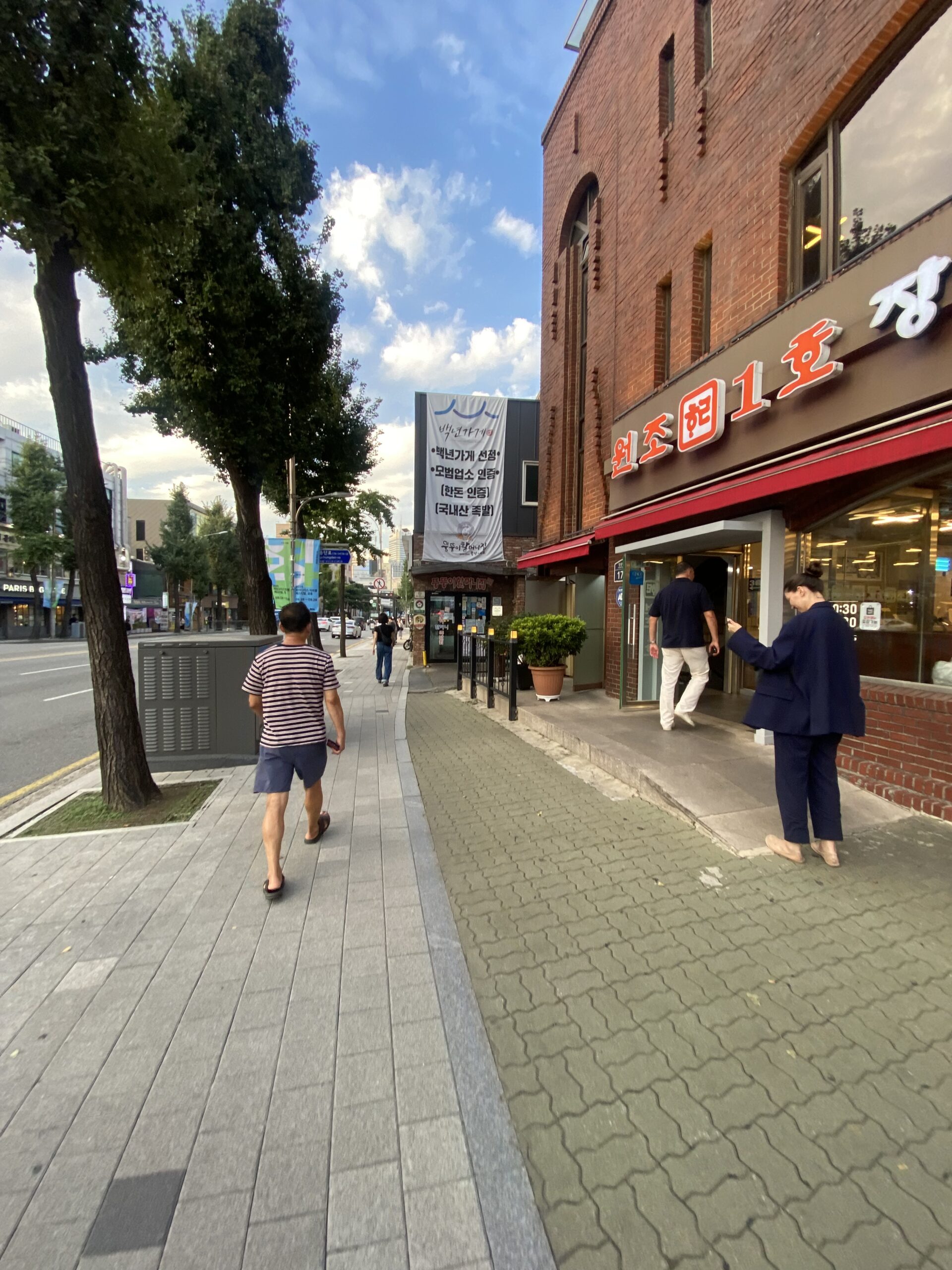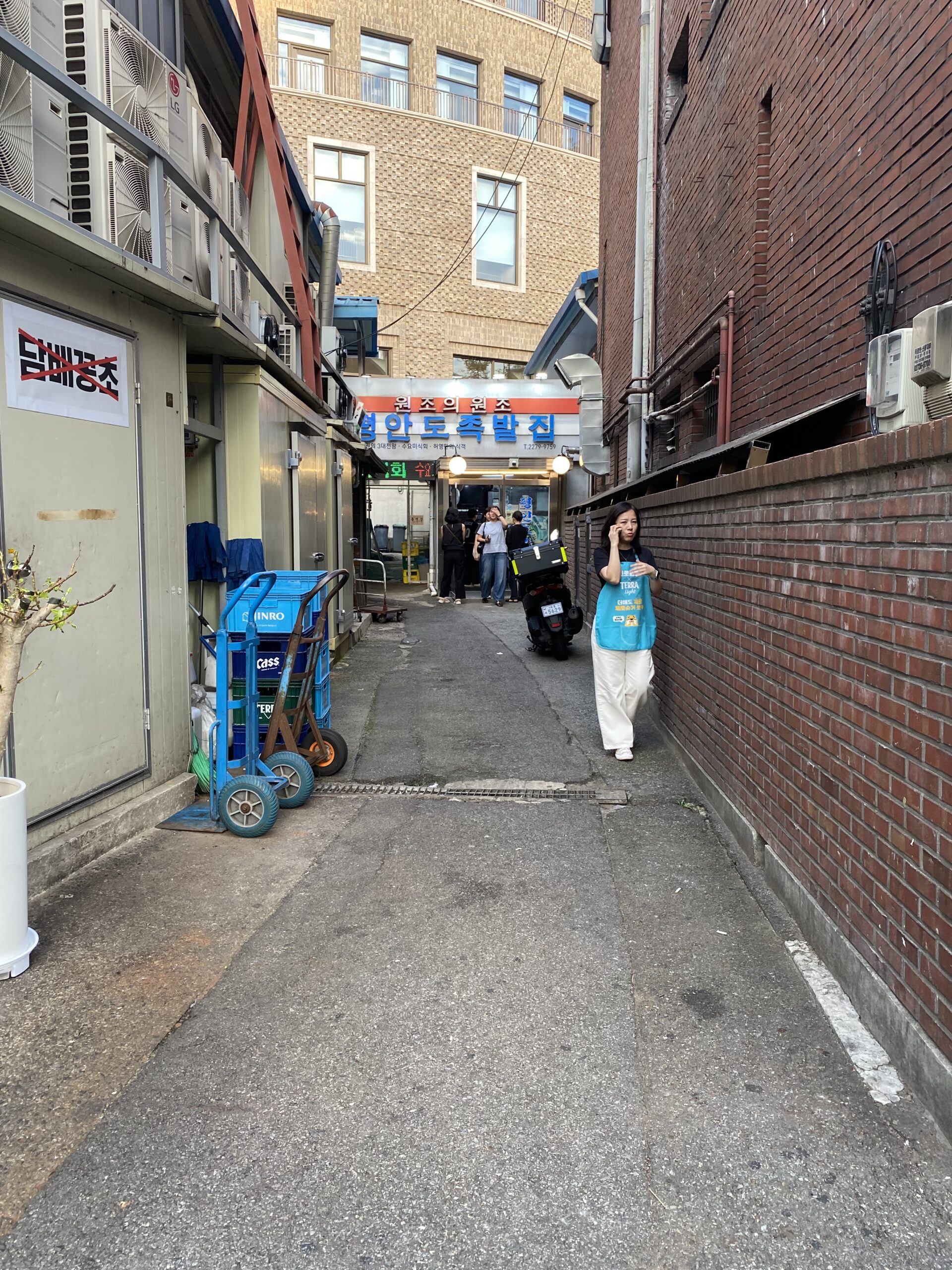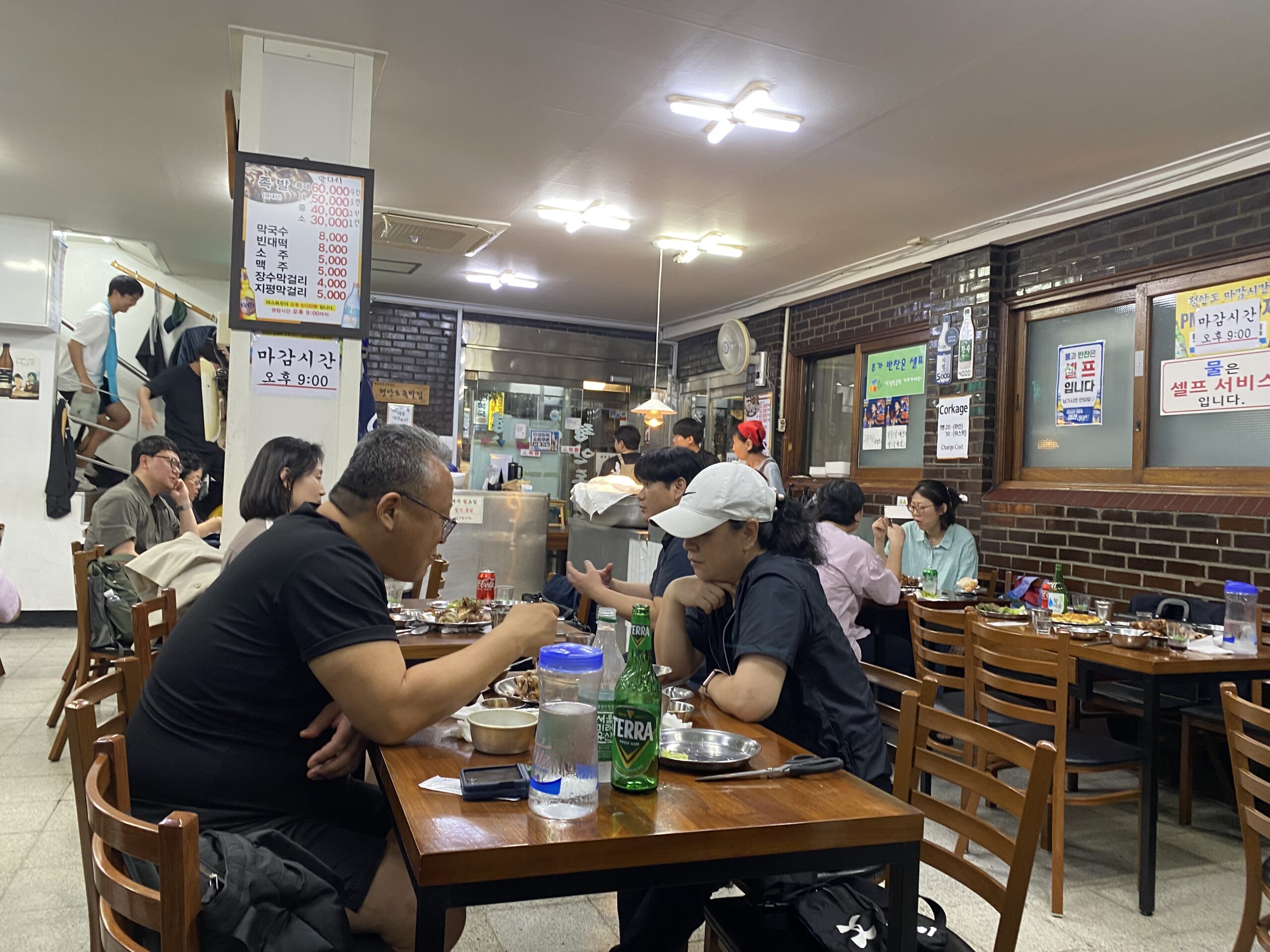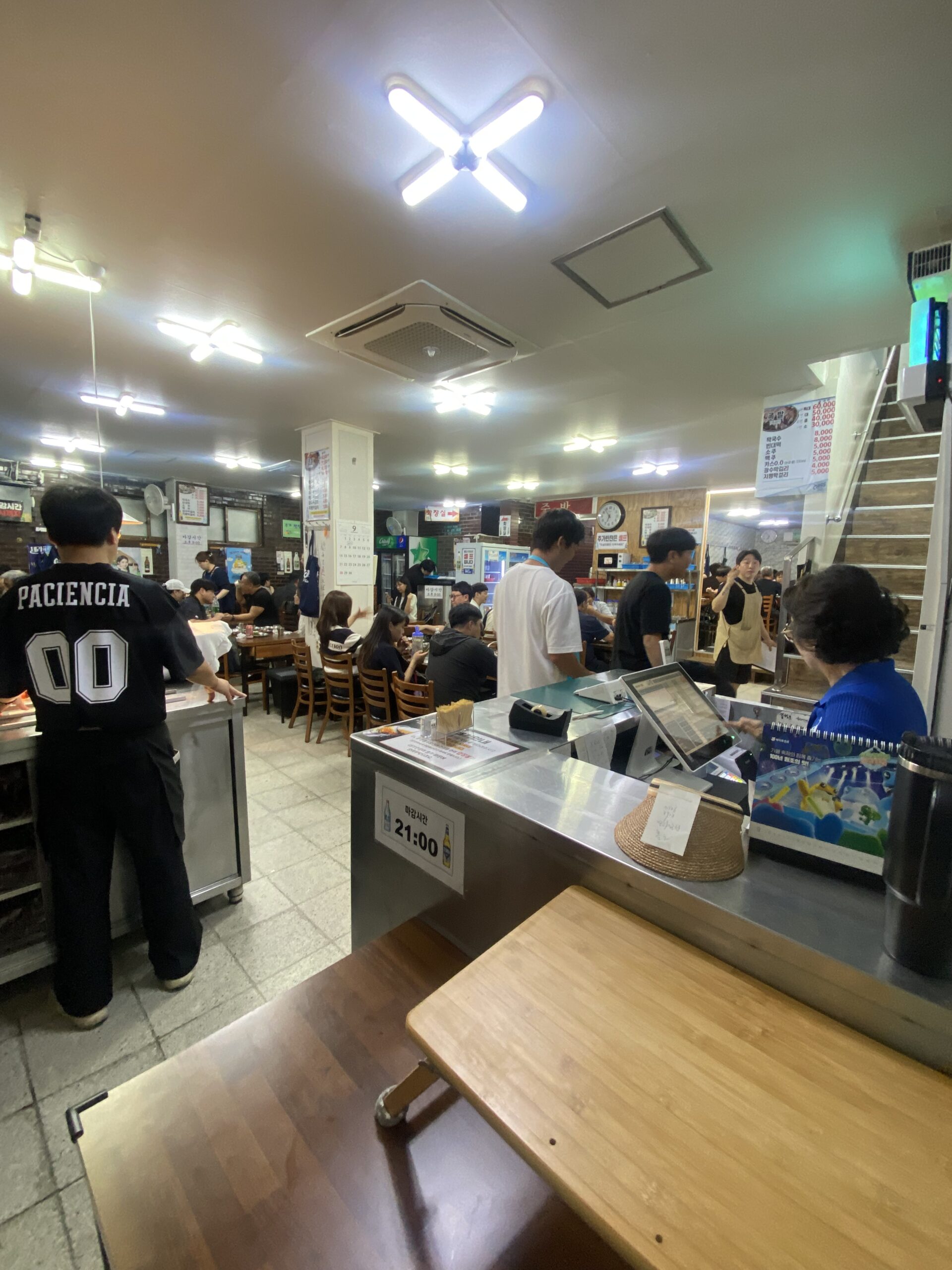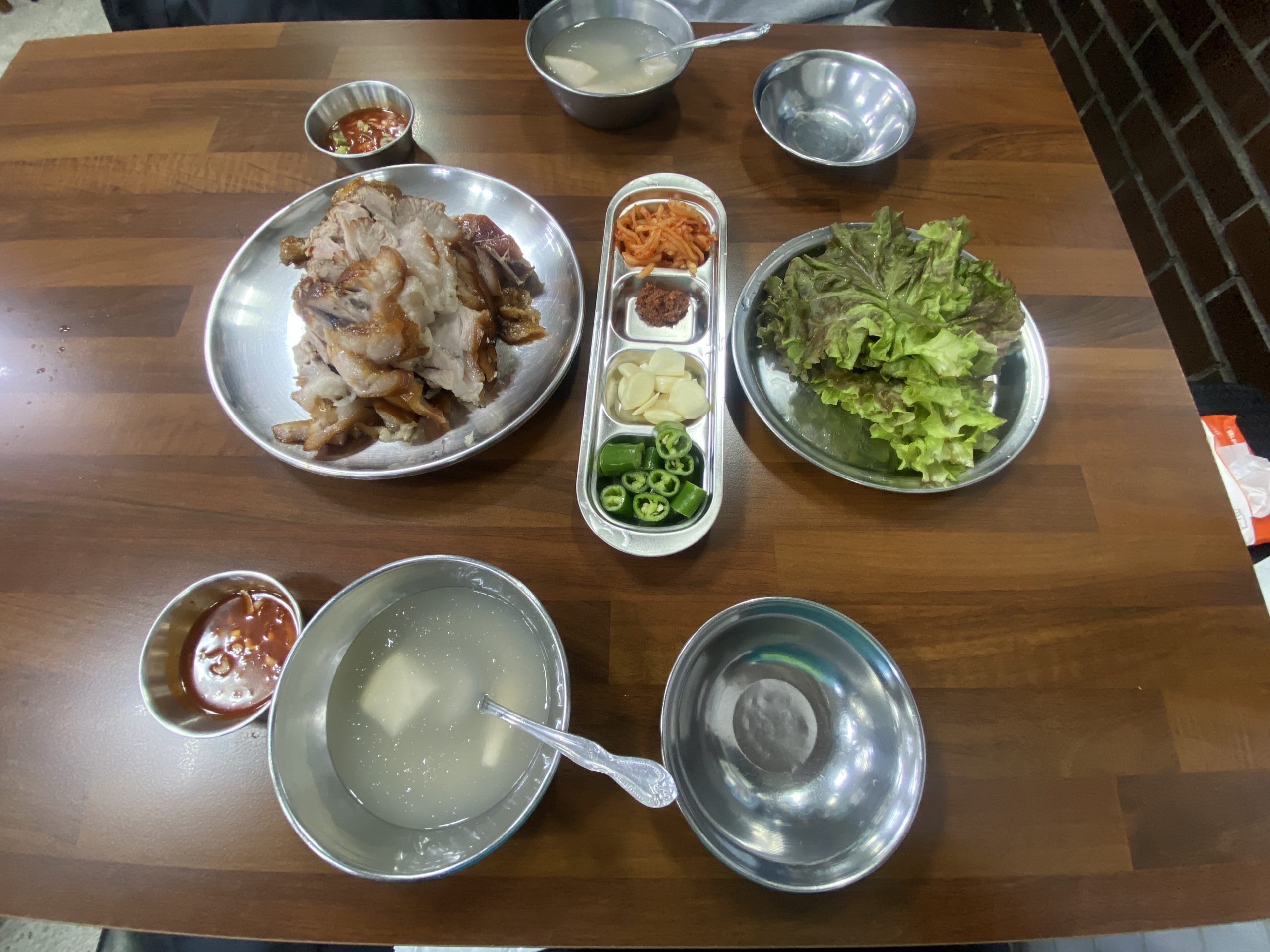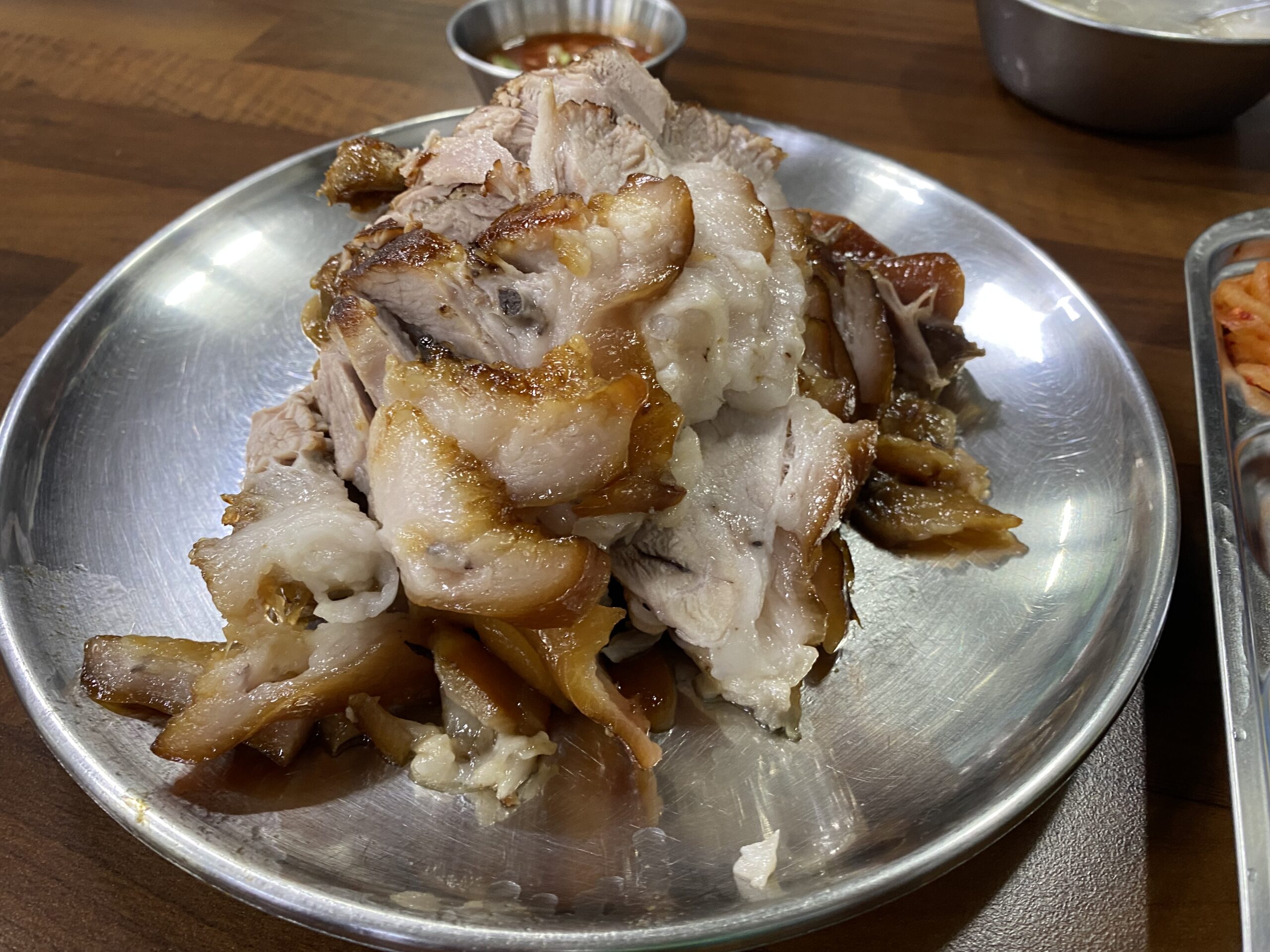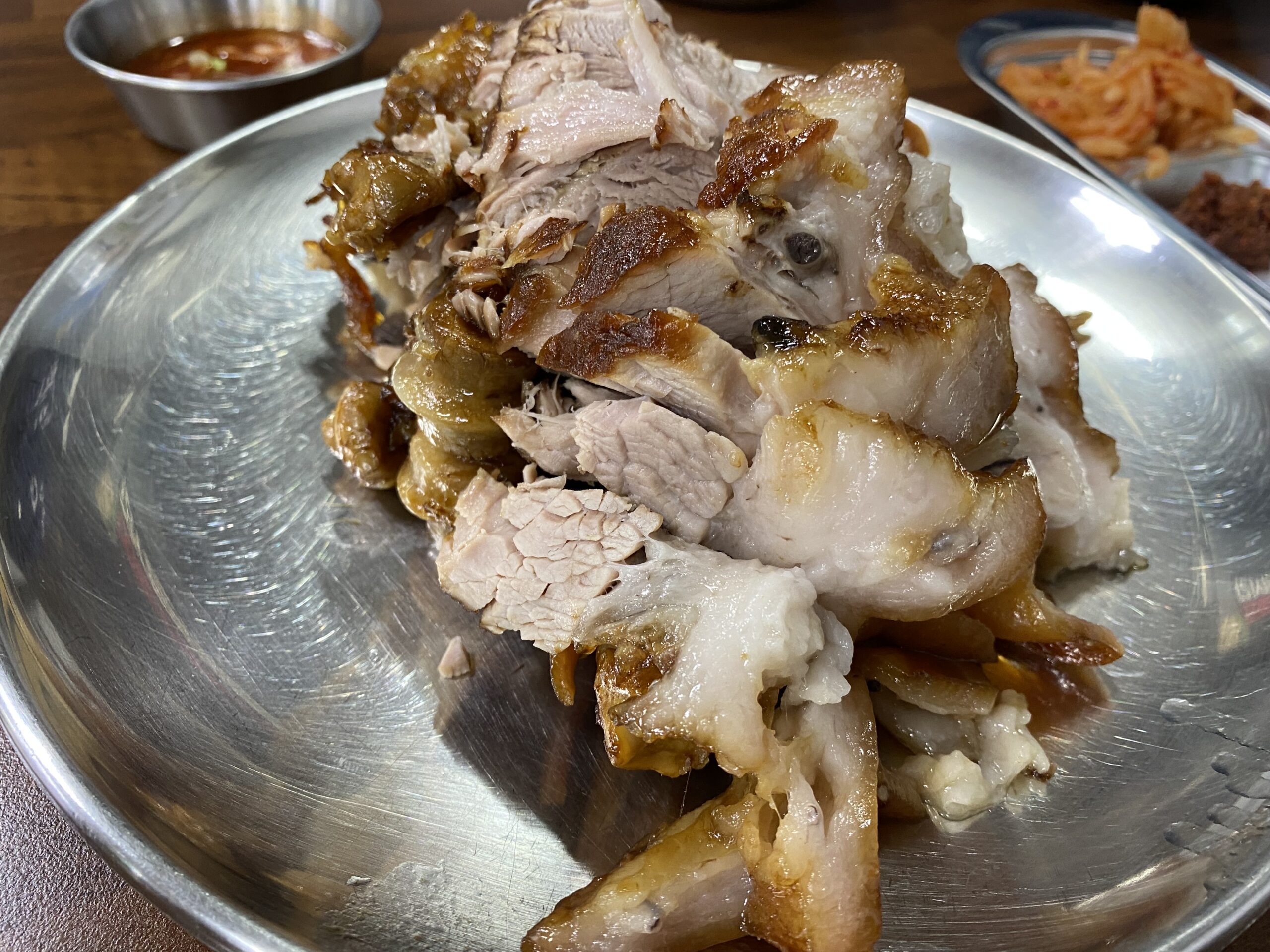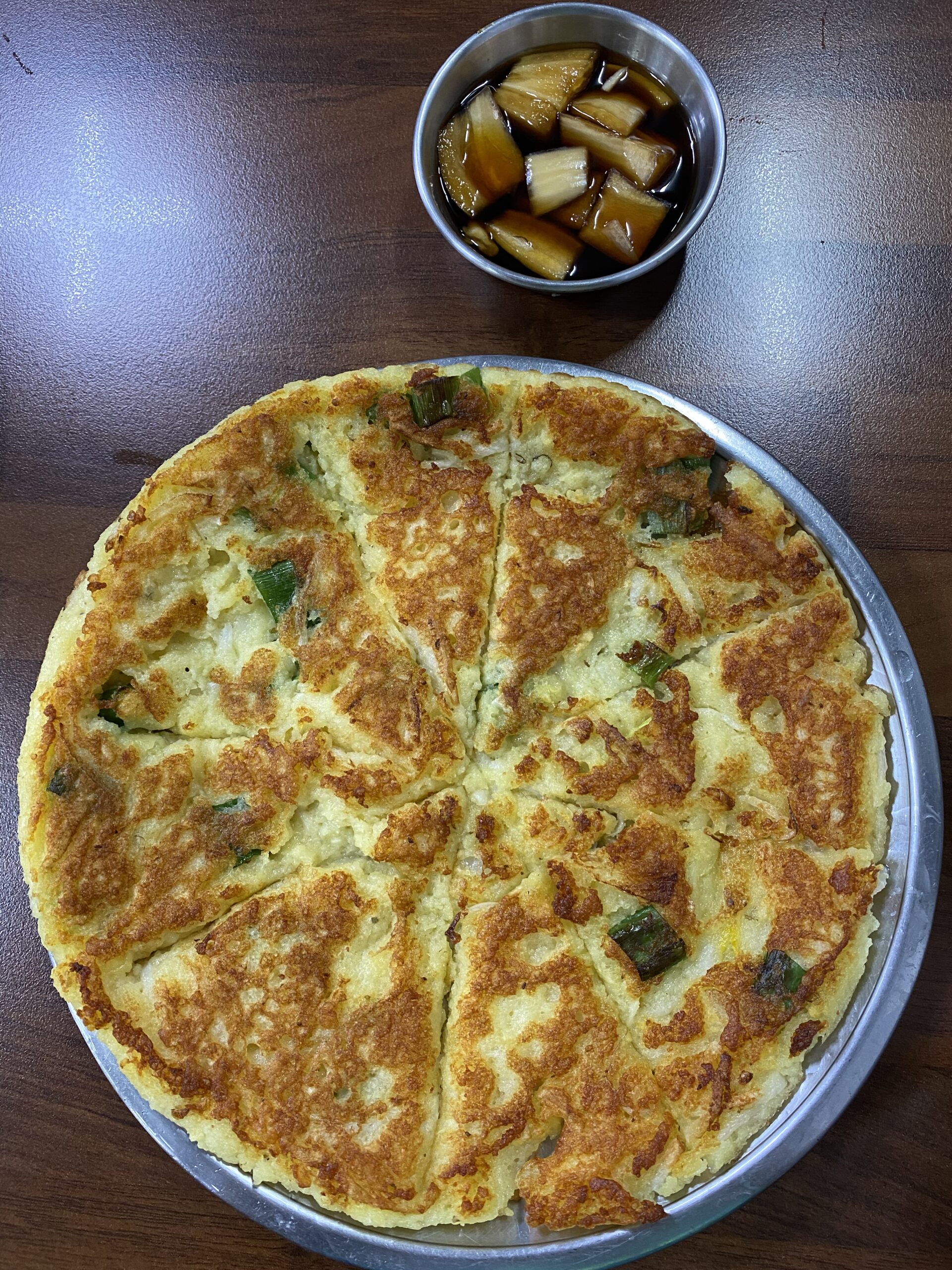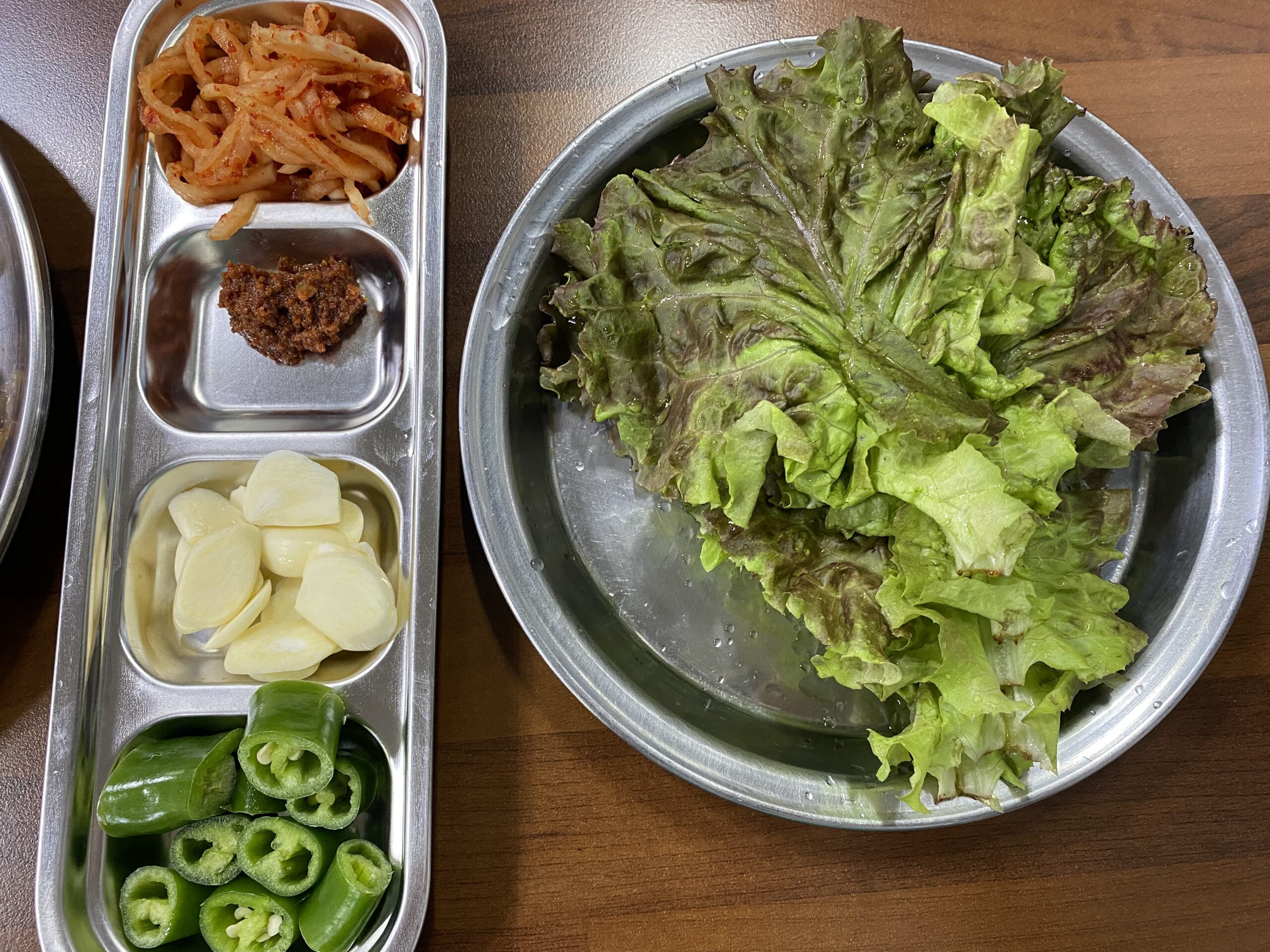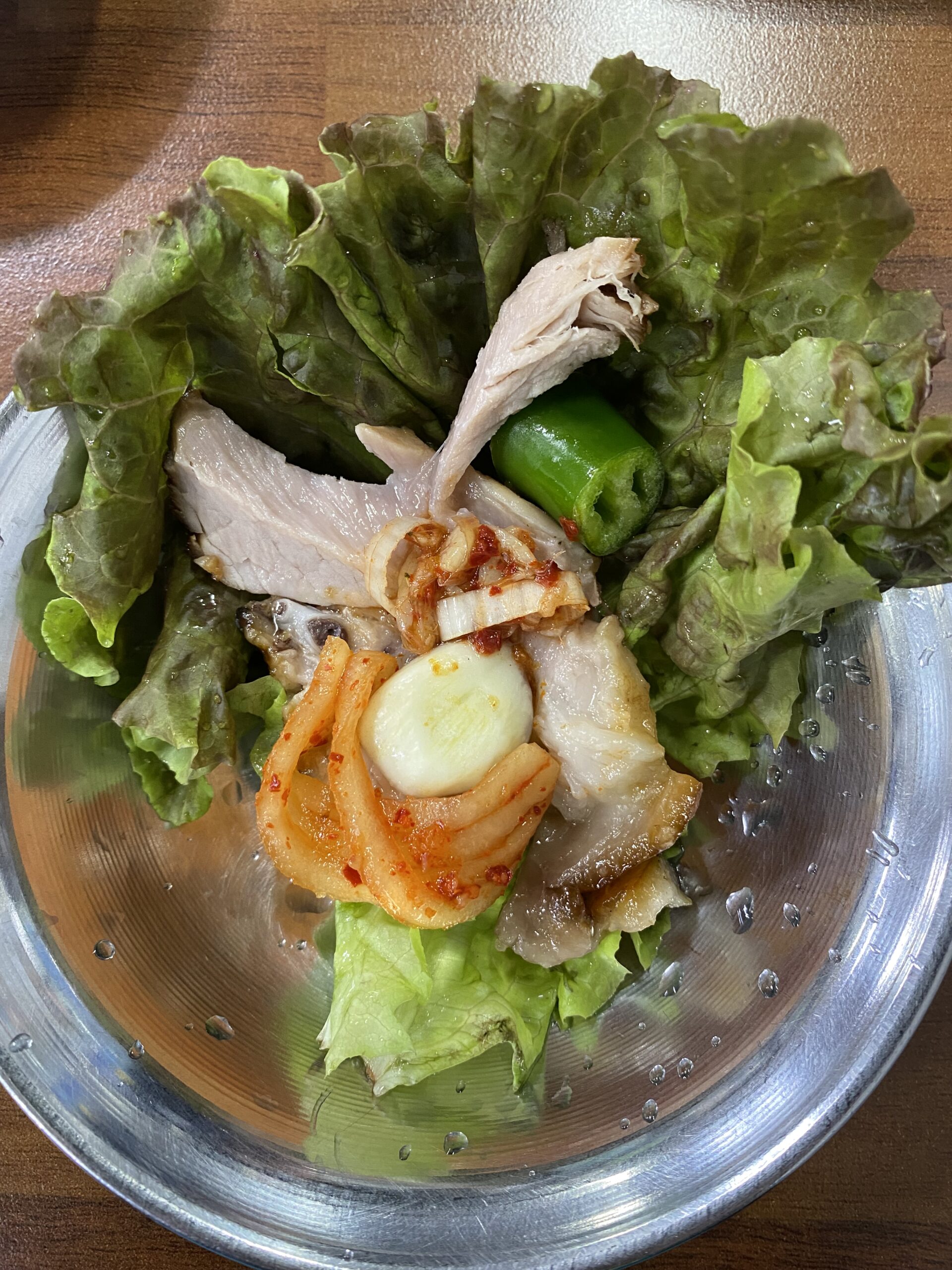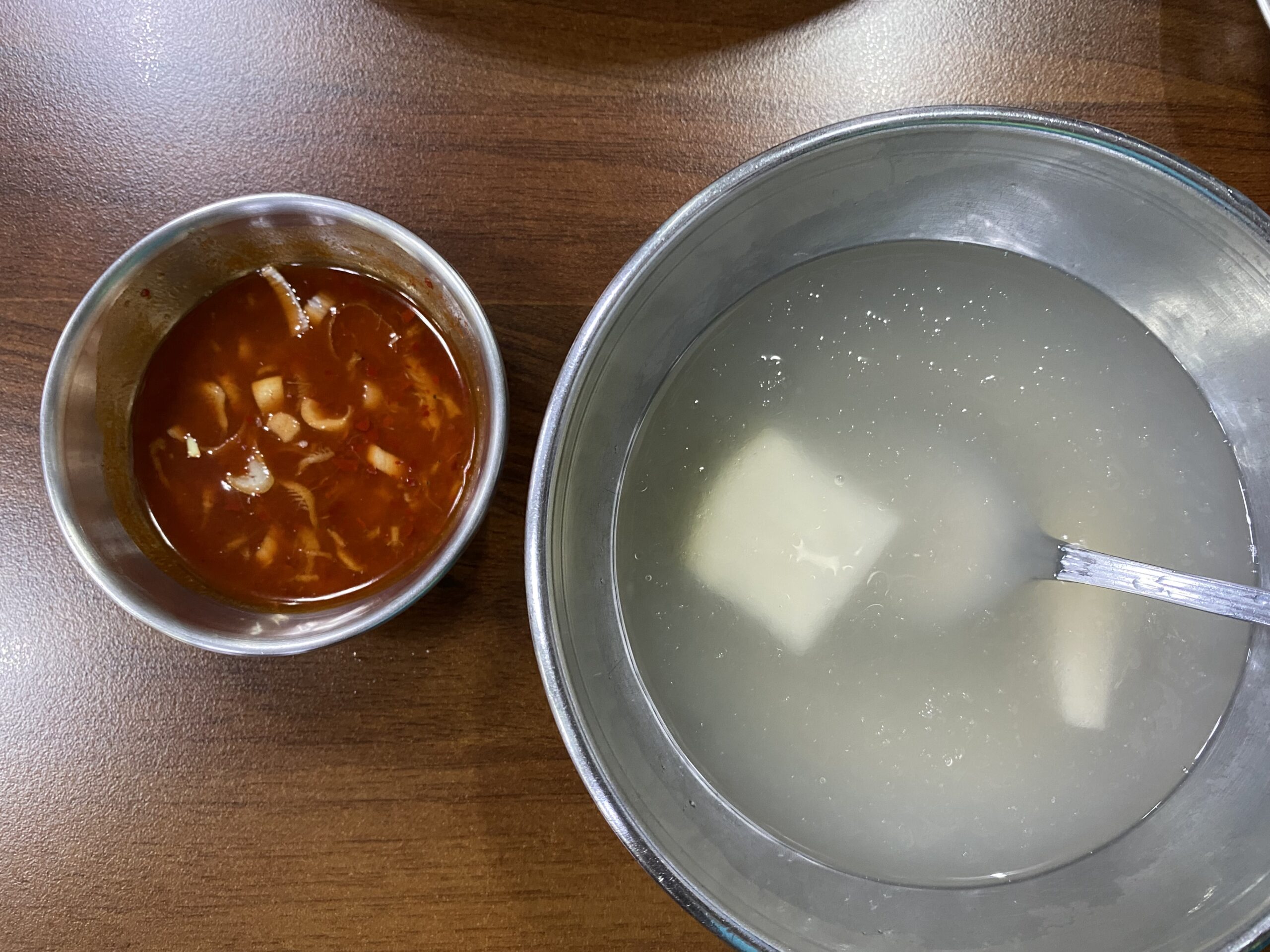Pyeongando Jokbaljip [Seoul] [Jokbal (Braised Pig’s Trotters)] (평안도 족발집)
I. Pyeongando Jokbaljip (평안도 족발집)
A Jokbal restaurant called “Pyeongando Jokbaljip (평안도 족발집)” is located near Exit 3 of Dongguk University Station on Seoul Subway Line 3. Jokbal is a Korean dish made by simmering a pig’s leg in a seasoned broth until tender and then slicing it. Unlike dishes like Schweinshaxe, where the whole leg is boiled, roasted in the oven, and carved at the table, jokbal is usually served pre-sliced, making it much easier to eat. While the leaner hind legs are less fatty, the front legs, which contain more cartilage and fat, are generally preferred. This particular restaurant specializes in using the front legs of the pig.
Dongguk University Station is in Jangchung-dong, an area famous for its numerous jokbal restaurants. Among them, Pyeongando Jokbaljip is considered a pioneer and has been featured in countless Korean media outlets. While restaurants that gain fame from TV shows sometimes don’t live up to expectations, this place truly lives up to its reputation. If you’re coming from Namsan Tower which served as the backdrop for K-Pop Demon Hunters, it takes roughly 30 minutes by bus to reach the restaurant.
II. Information
1. Address
- 174-6 Jangchungdan-ro, Jung-gu, Seoul
- https://maps.app.goo.gl/sSuBKMiEAfHMGqLMA
2. Opening Hours
Monday: Closed
Tuesday ~ Sunday: 11:00 AM – 9:00 PM
(Makguksu and Bindaetteok orders accepted until 8:20 PM)
3. Menu & Prices (as of 2025):
Jokbal 4 servings – 60,000 KRW
Jokbal 3 servings – 50,000 KRW
Jokbal 2 servings – 40,000 KRW
Jokbal 1 serving – 30,000 KRW
Makguksu and Bindaetteok – 8,000 KRW
Although the menu lists 30,000 KRW per serving, it’s enough for two people if you plan to share makguksu (buckwheat noodles) or bindaetteok (mung bean pancakes). If you prefer to enjoy just the meat without ordering any sides, you can go for 2 servings at 40,000 KRW. There’s no obligation to order makguksu or bindaetteok—simply enjoying the jokbal on its own is perfectly fine. (Makguksu is often paired more with dakgalbi, anyway.)
III. How to Get There
After exiting Dongguk University Station, Exit 3, walk about 100 meters, and you’ll see a small alley on your right. The restaurant is located at the end of this alley. There are other jokbal restaurants along the way, so don’t get confused—make sure to refer to the photo I’ve attached here for guidance.
IV. Inside the Restaurant
As a famous spot, the restaurant is always bustling with people. However, it’s quite spacious, so there’s virtually no waiting time. It hasn’t yet become well-known among tourists, so mostly locals visit. If you want to experience a truly Korean vibe, this place is highly recommended. Vegetables are refillable without limit, and water is self-serve. It’s a spot that offers a genuine sense of Korean authenticity.
V. The Food
The photo shows a small portion of jokbal priced at 30,000 KRW. The pancake-like dish next to it is bindaetteok (mung bean pancake). As mentioned earlier, the 30,000 KRW portion is roughly 1.5 servings for an adult male, so if two people plan to eat only the meat, it might not be enough. In that case, going for the 40,000 KRW portion is a better fit for two adult males.
Makguksu (buckwheat noodles) pairs better with dakgalbi, so you don’t necessarily need to order it here. The bindaetteok at this restaurant is quite tasty, though you can also find it at Gwangjang Market; however, the version here is slightly better. If your main goal is to enjoy the meat, it might be wiser to use the money you would spend on bindaetteok or makguksu to upgrade the meat portion. Of course, if you want to try a variety of dishes, that’s totally fine too—this is just based on my experience as someone who has tried a lot of Korean food.
Jokbal is often eaten wrapped in lettuce or other greens, but it’s not mandatory. You can enjoy it on its own, which actually lets you appreciate the meat’s natural flavor more. Some Koreans might insist that foreigners must eat it wrapped in greens, but there’s no strict rule. Adding garlic or other condiments can sometimes mask the unique taste of the jokbal, so eat it however you like.
Here’s a recommended approach: first, try the meat by itself. Next, try dipping it in a sauce that looks appealing. Finally, try it wrapped in greens. Then continue eating in whichever way you like best.
VI. Final Check
1. Does it offer a uniquely Korean authenticity?
→ Yes.
2. Is it a must-visit when in Seoul?
→ If it’s your first trip, I wouldn’t necessarily place it at the top of your priority list. However, if you truly love tender pork, it’s worth a visit even on your first trip. Also, if this isn’t your first visit to Korea but you’ve never tried jokbal before, it’s definitely worth checking out. Keep in mind that after trying this place, other jokbal restaurants might feel a little underwhelming in comparison.
3. Is it Instagram-worthy?
→ Jokbal is not as widely recognized as some other Korean dishes yet, so it depends on how you style your photos.
4. What level of experience in Korea is it suited for?
→ For first-time visitors with their own bucket list, there’s no need to rearrange your plans just for this restaurant. For repeat visitors with some free time in their itinerary, I’d recommend giving it a try.
5. Accessibility from central Seoul?
→ Very convenient. It’s close to Namsan Tower and Myeongdong.
